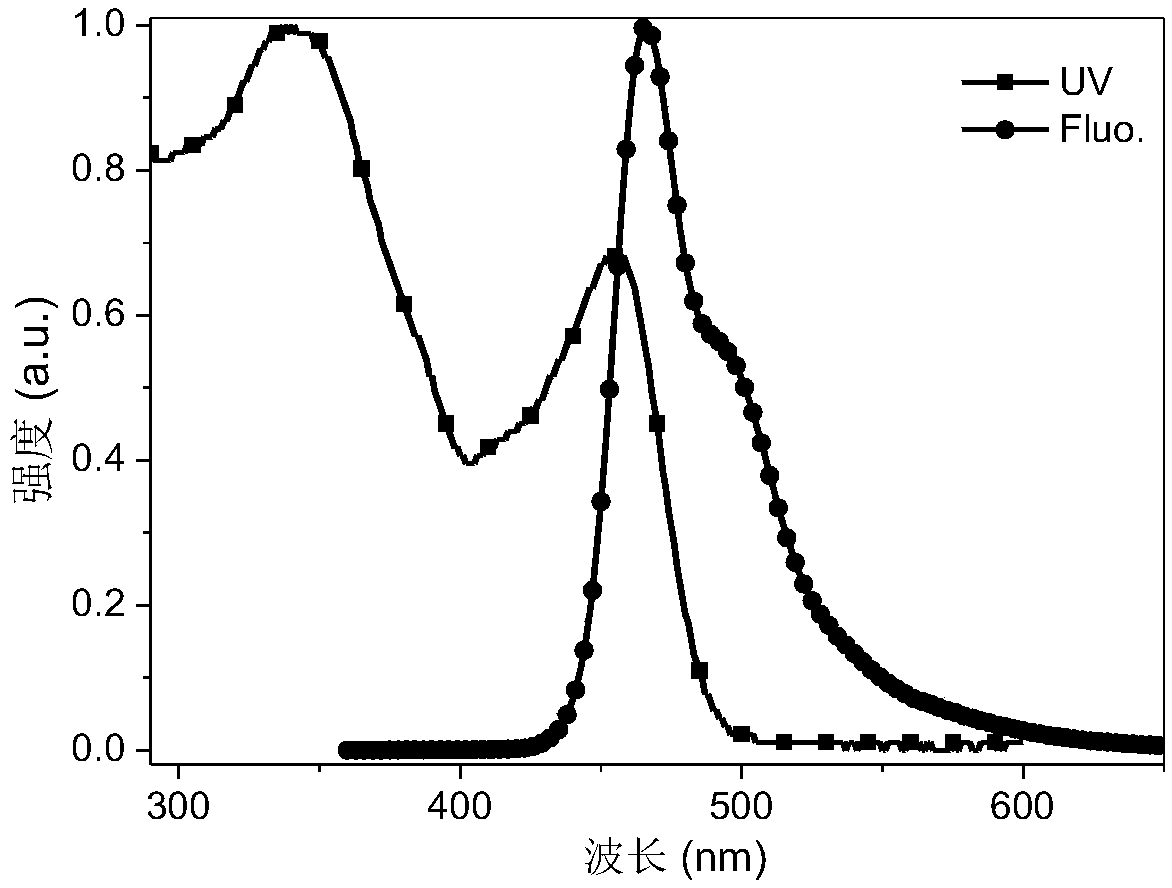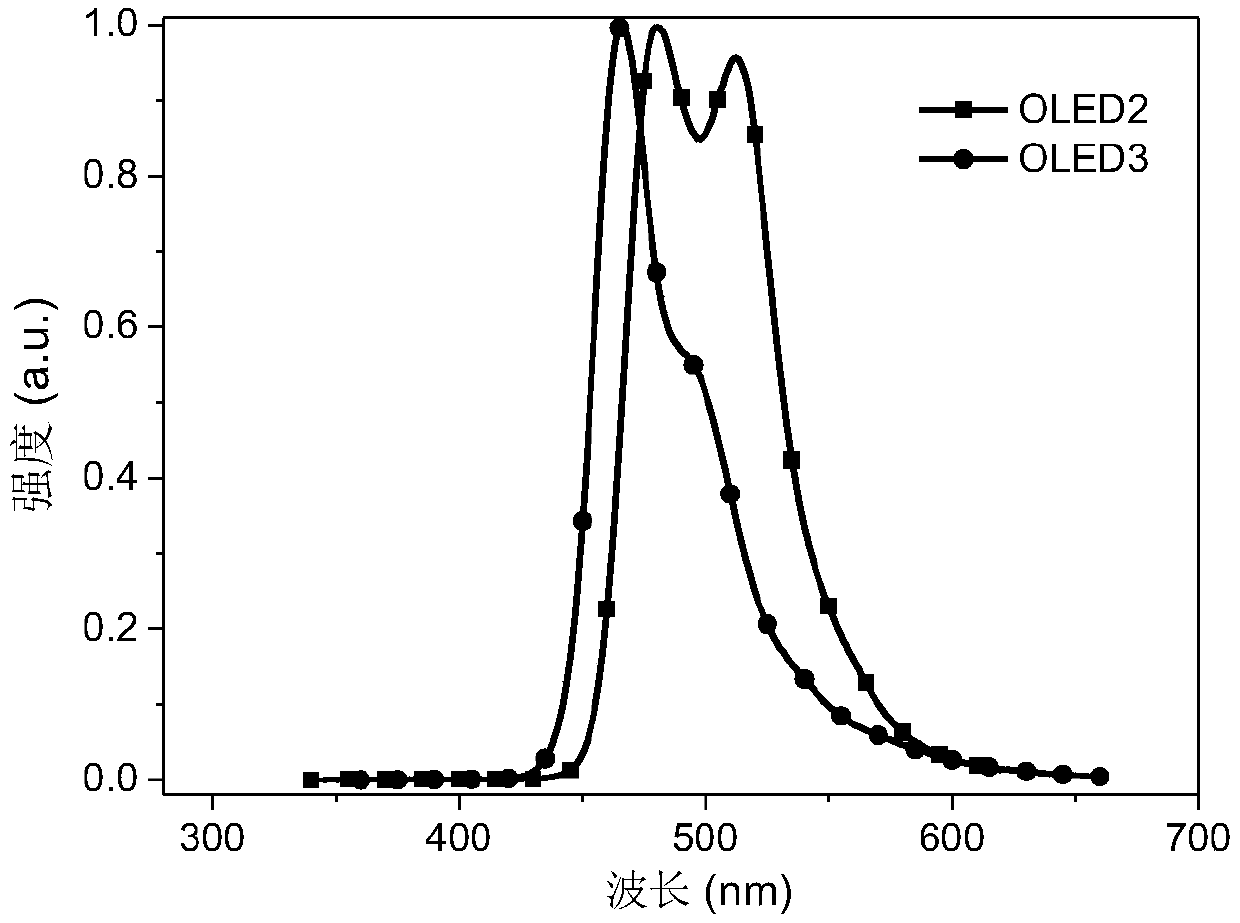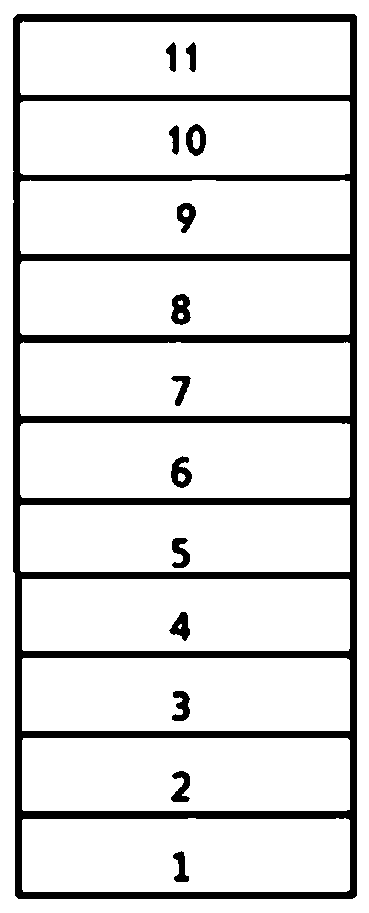Organic electroluminescent compound, luminescent material and organic electroluminescent device
A technology of electroluminescent devices and luminescent materials, which is applied in luminescent materials, organic chemistry, electric solid-state devices, etc., can solve the problems of reduced color purity, poor thermal stability, and chromatic aberration, and achieve excellent heat resistance, reduced life, and low The effect of drive voltage
- Summary
- Abstract
- Description
- Claims
- Application Information
AI Technical Summary
Problems solved by technology
Method used
Image
Examples
preparation example 1
[0134] This preparation example is used to prepare compound 44, and its structural formula and synthetic route are as follows:
[0135] Synthesis of Intermediate 44A
[0136]
[0137] In a 250mL Schlenk bottle, add 10.19g (25.77mmol) of 4-bromo-9,9'-spirobifluorene, 3.00g (15.00mmol) of aniline, 0.36g (1.6mmol) of palladium acetate, tri-tert-butylphosphinetetrafluoro Borate 0.93g (3.22mmol), sodium tert-butoxide 9.29g (96.64mmol), toluene 150mL, under the protection of argon, reflux and stir for 12 hours to complete the reaction. Evaporate the solvent, dissolve the residue with 100mL dichloromethane and 50mL water, wash with water, separate the organic layer, extract the water layer twice with 30mL dichloromethane, combine the organic layers, evaporate the solvent, and separate the residue by column chromatography (The silica gel is 350 mesh, and the eluent is petroleum ether:dichloromethane=3:1 (V / V)), the solvent was evaporated, and after drying, 9.70 g of white solid wa...
preparation example 2
[0142] This preparation example is used to prepare compound 74, its structural formula and synthetic route are as follows:
[0143] Synthesis of Intermediate 74A
[0144]
[0145] In a 250mL Schlenk bottle, add 7.04g (25.77mmol) of 9,9-dimethyl-2-bromofluorene, 3.00g (32.21mmol) of aniline, 0.36g (1.61mmol) of palladium acetate, tri-tert-butylphosphine tetrafluoro Borate 0.93g (3.22mmol), sodium tert-butoxide 9.29g (96.64mmol), toluene 150mL, under the protection of argon, reflux and stir for 12 hours to complete the reaction. Evaporate the solvent, dissolve the residue with 150mL dichloromethane and 100mL water, wash with water, separate the organic layer, extract the aqueous layer twice with 15mL dichloromethane, combine the organic layers, evaporate the solvent, and separate the residue by column chromatography (The silica gel is 350 mesh, and the eluent is petroleum ether:dichloromethane=4:1 (V / V)), the solvent was evaporated, and after drying, 6.20 g of white crystals...
preparation example 3
[0150] This preparation example is used to prepare compound 83, and its structural formula and synthetic route are as follows:
[0151] Synthesis of Intermediate 83A
[0152]
[0153] In a 250mL Schlenk bottle, add 5.90g (14.93mmol) of 3-bromo-9,9'-spirobifluorene, 2.00g (18.66mmol) of aniline, 0.21g (0.09mmol) of palladium acetate, tri-tert-butylphosphinetetrafluoro Borate 0.54g (1.87mmol), sodium tert-butoxide 5.38g (56.0mmol), toluene 120mL, under the protection of argon, reflux and stir for 12 hours to complete the reaction. Evaporate the solvent, dissolve the residue with 200mL dichloromethane and 50mL water, wash with water, separate the organic layer, extract the aqueous layer twice with 15mL dichloromethane, combine the organic layers, evaporate the solvent, and separate the residue by column chromatography (The silica gel is 350 mesh, and the eluent is petroleum ether:dichloromethane=2:1 (V / V)), the solvent was evaporated, and after drying, 6.40 g of white crystal...
PUM
| Property | Measurement | Unit |
|---|---|---|
| Thickness | aaaaa | aaaaa |
| Film thickness | aaaaa | aaaaa |
Abstract
Description
Claims
Application Information
 Login to View More
Login to View More - R&D Engineer
- R&D Manager
- IP Professional
- Industry Leading Data Capabilities
- Powerful AI technology
- Patent DNA Extraction
Browse by: Latest US Patents, China's latest patents, Technical Efficacy Thesaurus, Application Domain, Technology Topic, Popular Technical Reports.
© 2024 PatSnap. All rights reserved.Legal|Privacy policy|Modern Slavery Act Transparency Statement|Sitemap|About US| Contact US: help@patsnap.com










